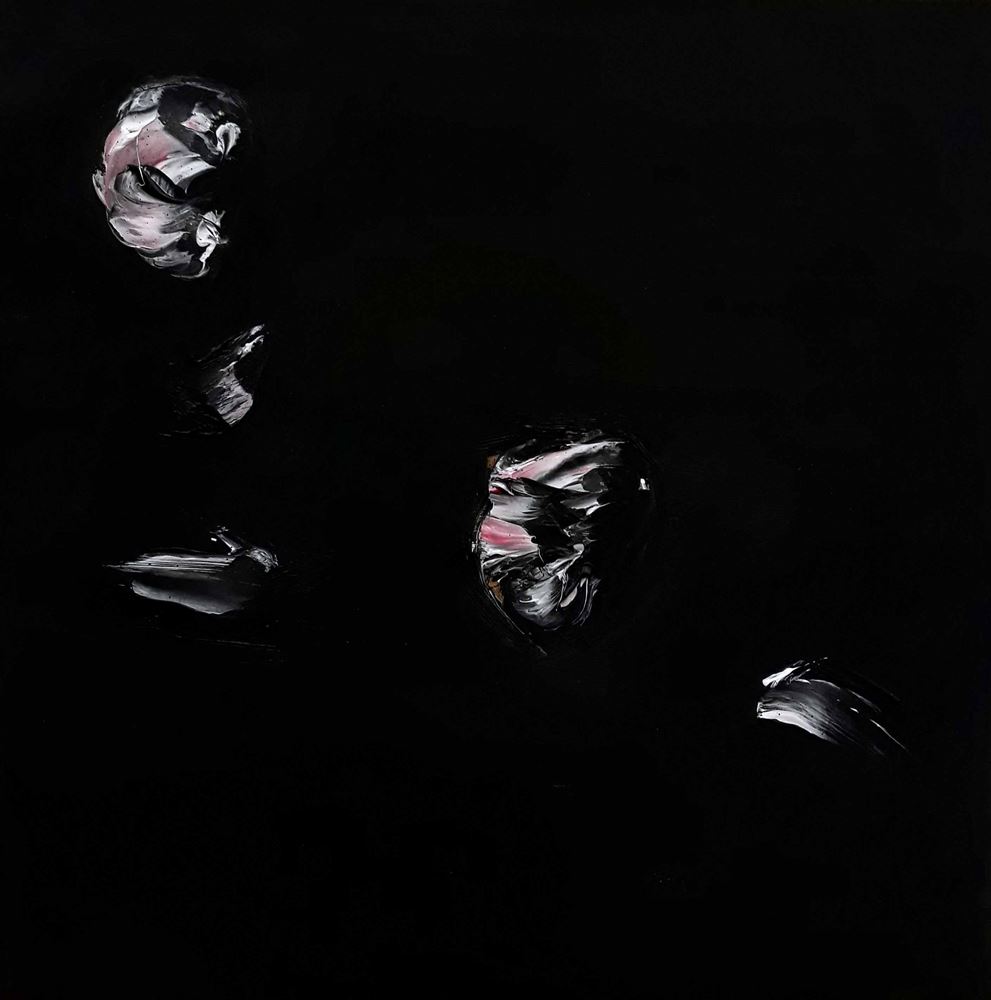


Born Biella, Italy, in 1971. He works and lives in Bologna, Italy.
“For me even the light, in the darkness, represents something that begins to appear shyly from the nothingness that is my condition.” Lorenzo Puglisi
Lorenzo Puglisi’s paintings are the result of a pictorial research based on a strong interest in human nature and therefore in the mystery of existence urged by the obsessive attempt to portray it. Since 2015 his large canvases present references to art history and are related to masterpieces of the past filtered by his personal iconographic repertoire.
His tactile paintings are characterised by the widespread use of black colour on the canvas which creates an absolute dark background, and from this darkness emerge volumes, faces and hands with vague outlines and features, consisting of vigorous brushstrokes sketching out the lineaments. These images are only recognisable (apart from the titles of the works referring to the original models) by their identical positions on the canvas and they bring to mind the great tradition of light and shadows as expounded by Leonardo, Caravaggio, Rembrandt and Goya: deconstructed details of their pictures appears to materialise through a dazzling white light that pierces the black background, as if they were relics, traces, memories or remains.
His work has been showed in numerous solo exhibitions and group exhibitions in public and private spaces in Italy and abroad, among them, the MUDEC in Milan, the CAC La Traverse in Paris, the Pio Monte della Misericordia in Naples, the Sacristy of Bramante in Milan, the Crypt Gallery of King's Cross St. Pancras Church in London.
In recent years his artistic research has focused on large canvases that relate to the great masterpieces of the past filtered by his iconography. Future projects will include an exhibition at the Latvian National Museum of Art in Riga in Latvia in May 2020 in collaboration with the Uffizi Galleries in Florence.
In June 2019 Puglisi’s monography, curated by Hatje Cantz (Berlin), was published in Italian, English and German, with a special essay by Mark Gisbourne.
|
This website uses third party cookies | X |
 This site uses anonymous technical cookies to ensure navigation and third-party cookies to monitor traffic and to offer additional services such as viewing videos or messaging systems. Without third-party cookies some pages may not work properly. Third-party cookies can track your activity and will only be installed by clicking on the "Accept all cookies" button. You can change your selection at any time by clicking on the "Cookie" link on each page at the bottom left. By clicking on one of the two buttons you declare that you have read the privacy policy and to accept the conditions.
This site uses anonymous technical cookies to ensure navigation and third-party cookies to monitor traffic and to offer additional services such as viewing videos or messaging systems. Without third-party cookies some pages may not work properly. Third-party cookies can track your activity and will only be installed by clicking on the "Accept all cookies" button. You can change your selection at any time by clicking on the "Cookie" link on each page at the bottom left. By clicking on one of the two buttons you declare that you have read the privacy policy and to accept the conditions.
| |
|